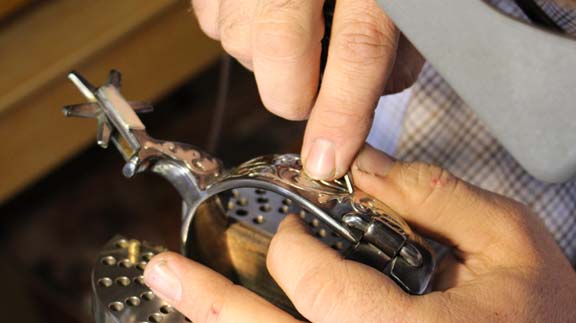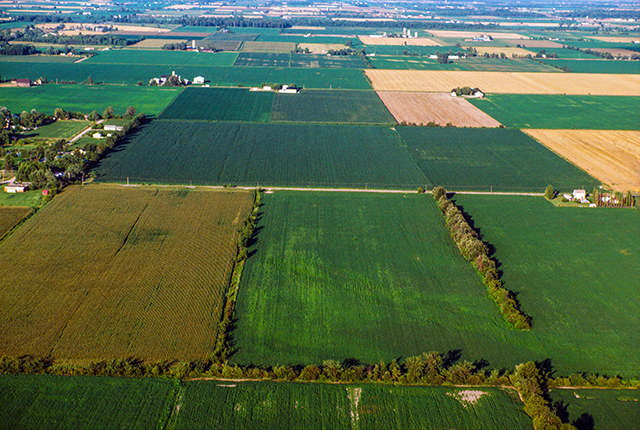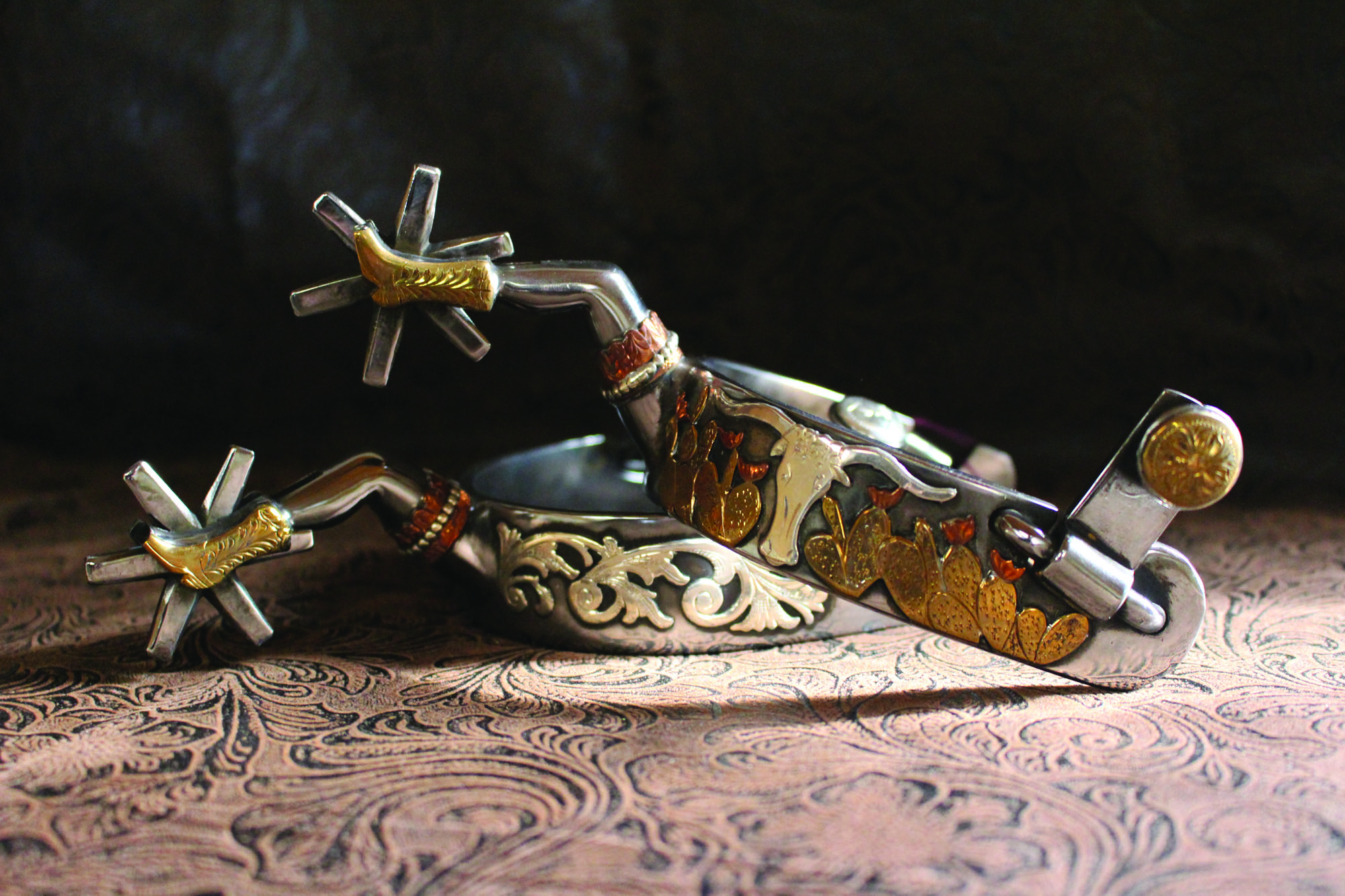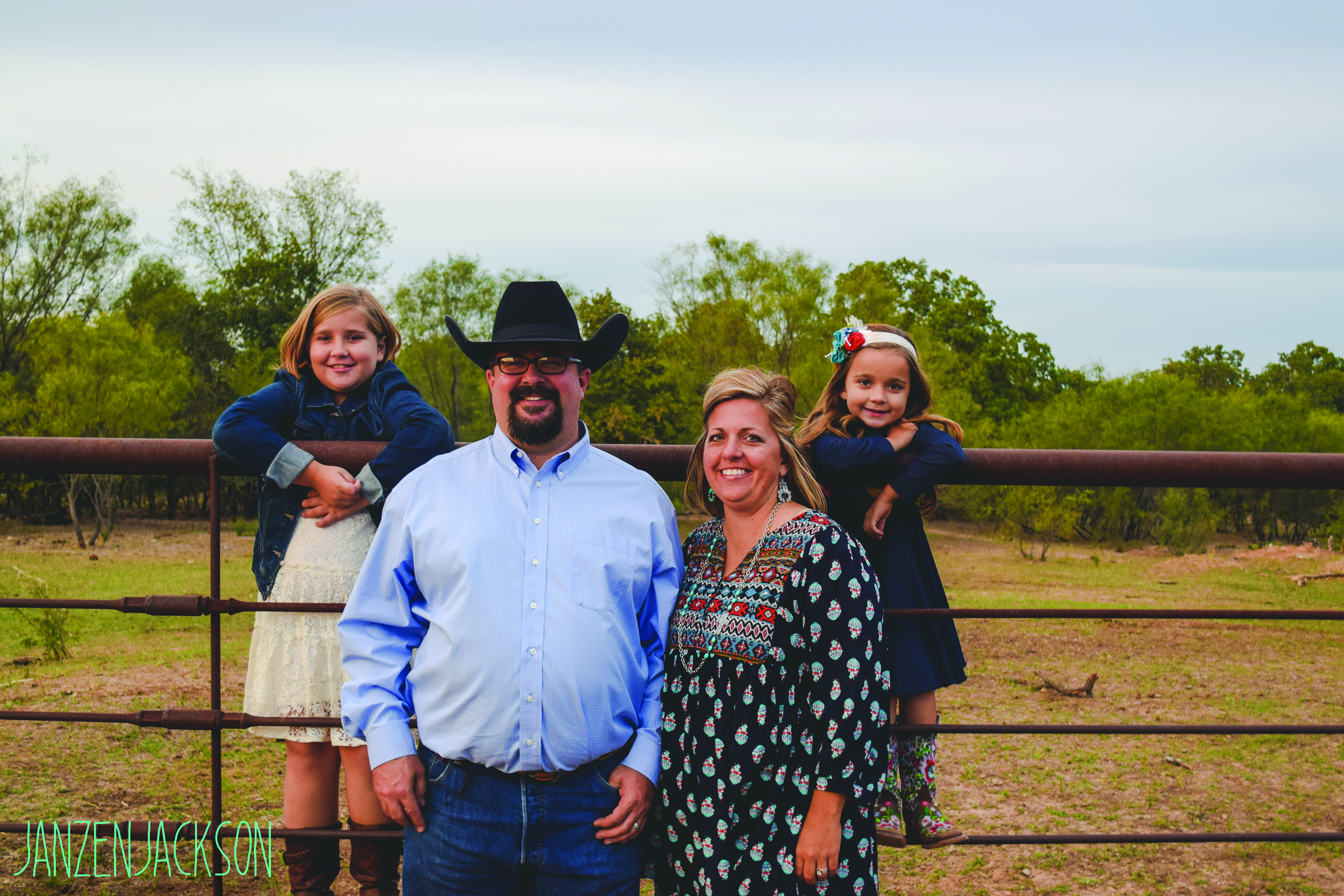Country Lifestyles
April 2016 Profile – Michael Tittor: Engraved Art

By Jessica Crabtree
Steel to the eye is dark, cold to the touch and heavy. It is an item of little character or appeal, although its uses are many. The same can be said for copper, brass and silver; however, their differences in color, weight and shine are more pleasing to the eye and touch. All three have multiple uses; however how many people can render it beautiful?
The art of engraving is rare and coveted. It takes a special set of skills, patience and understanding of the tools and medium. Hours and hours of work and paying attention to tiny details are what make a silversmith, engraver or both. Of those people they can be any gender, of any race and age. They, too, are as diverse as the metal they engrave.
Michael Tittor resides in Paradise, Texas, and was raised just three miles from were he lives currently. It’s small town in Wise County, where most of the population lives outside town in a rural setting. Tittor’s ancestors, the Manns on his mother’s side, came to Wise County and settled in the mid-1800s. Tittor’s great-great-great grandfather even served as one of the very first sheriffs of Wise County. His name was W.J. Mann. On his father’s side, Tittor is of Russian descent.
Eventually moving their family to the family ranch, the Tittor family lived within walking distance of their uncle, aunt, grandparents and great-grand-parents. “Me, my siblings and cousins had 400 acres right in front of us to spend every day riding horses and hunting,” Tittor said. “My grandad was pretty old school. He ran most all Longhorns. We helped him work cattle all the time. It wasn’t until I was older that there was any other way to work cattle besides horseback,” he went on to say. To read more pick up the April 2016 issue of NTFR.
Country Lifestyles
While We Were Sleeping

By Martha Crump
That old adage, “What you don’t know won’t hurt you.,” may have some basis in truth when applied to minor situations. However, when what you don’t know is presented in the form of a “Trojan Horse” and is what amounts to an incredible attempt to fleece American property rights, it becomes a different story altogether.
To put this unbelievable tale together, we need to step back to Joe Biden’s 2021 Executive Order which pledged commitment to help restore balance on public lands and waters, to create jobs, and to provide a path to align the management of America’s public lands and waters with our nation’s climate, conservation, and clean energy goals.
To read more, pick up a copy of the April issue of NTFR magazine. To subscribe by mail, call 940-872-5922.
Country Lifestyles
Lacey’s Pantry: Strawberry Sorbet

By Lacey Vilhauer
Ingredients:
1 whole lemon, seeded and roughly chopped
2 cups sugar
2 pounds strawberries, hulled
Juice of 1 to 2 lemons
¼ cup water
Directions:
Place the chopped lemon and sugar in a food processor and pulse until combined. Transfer to a large bowl. Puree the strawberries in a food processor and add to the lemon mixture along with juice of one lemon and water. Taste and add more juice as desired.
To read more, pick up a copy of the April issue of NTFR magazine. To subscribe by mail, call 940-872-5922.
Country Lifestyles
A Mountain Out of a Molehill

By Nicholas Waters
As winter plods along – come Spring and gopher mounds – homeowners and farmers find themselves playing a familiar song – fiddling while Rome is burning.
Let’s make a mountain out of a molehill. Those mounds on your lawn and pasture could be moles, but they’re more than likely gophers; Plains Pocket Gophers to be pragmatic – Geomys bursarius to be scientific.
These rodents dig and chew, and the damage they can do goes beyond the mounds we mow over. Iowa State University cited a study in Nebraska showing a 35 percent loss in irrigated alfalfa fields due to the presence of pocket gophers; the number jumped to 46 percent in decreased production of non-irrigated alfalfa fields.
The internet is replete with academic research from coast-to-coast on how to curtail gopher populations, or at least control them. Kansas State University – then called Kansas State Agricultural College – also published a book [Bulletin 152] in February 1908 focused exclusively on the pocket gopher.
To read more, pick up a copy of the April issue of NTFR magazine. To subscribe by mail, call 940-872-5922.
-

 Country Lifestyles1 year ago
Country Lifestyles1 year agoScott & Stacey Schumacher: A Growth Mindset
-

 Equine7 months ago
Equine7 months agoThe Will to Win
-

 Country Lifestyles7 years ago
Country Lifestyles7 years agoStyle Your Profile – What your style cowboy hat says about you and new trends in 2017
-

 Country Lifestyles4 years ago
Country Lifestyles4 years agoAmber Crawford, Breakaway Roper
-

 HOME7 years ago
HOME7 years agoGrazing North Texas – Wilman Lovegrass
-

 Country Lifestyles7 years ago
Country Lifestyles7 years agoDecember 2016 Profile, Rusty Riddle – The Riddle Way
-

 Country Lifestyles8 years ago
Country Lifestyles8 years agoJune 2016 Profile – The man behind the mic: Bob Tallman
-

 Outdoor9 years ago
Outdoor9 years agoButtercup or Primrose?













